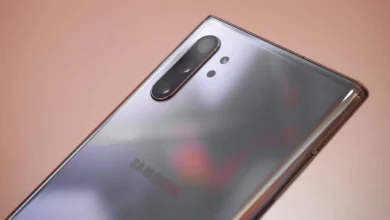5G UW in Simple Terms: How It’s Transforming Connectivity

I. Introduction
What is 5G UW meaning?
5G Ultra-Wideband (UW) is an advanced form of 5G connectivity that offers significantly higher speeds, lower latency, and greater network capacity compared to standard 5G. Unlike traditional wireless networks, 5G UW operates on high-frequency spectrums, enabling ultra-fast data transmission. It is designed to support next-generation applications, including smart cities, autonomous vehicles, and real-time cloud computing.
Why It Matters
The demand for faster internet speeds has grown exponentially due to the increasing reliance on digital communication, remote work, streaming, and IoT devices. 5G UW addresses these needs by delivering gigabit speeds and seamless connectivity, making it crucial for industries, businesses, and individual users. This technology is set to revolutionize digital interactions and redefine how we connect to the world.
II. Understanding 5G UW: Breaking It Down Simply
What Does “5G UW mean (Ultra-Wideband)”?
Ultra-Wideband (UW) refers to the use of a high-frequency spectrum, primarily in the mmWave (millimeter wave) band, which ranges from 24 GHz to 100 GHz. Unlike traditional 4G LTE, which operates on lower frequency bands (sub-6 GHz), mmWave frequencies enable much faster data rates and lower network congestion. However, these high-frequency signals have shorter transmission ranges and require dense infrastructure.
How 5G UW Works
- Small Cell Towers: To overcome the limited range of mmWave frequencies, small cell towers are deployed in high-density areas such as cities, stadiums, and shopping malls. These towers ensure continuous high-speed connectivity.
- Higher Bandwidth & Multi-Device Connectivity: 5G UW can handle significantly more simultaneous connections, making it ideal for IoT applications, smart homes, and enterprise networks.
Also read: 5G UC vs 5G UW: Understanding the Key Differences in 5G Connectivity
III. Key Features of 5G UW
1. Faster Speeds
5G UW offers speeds up to 10 Gbps, allowing users to download movies, games, and large files within seconds. In comparison:
- 4G LTE speeds range between 10-100 Mbps.
- Standard 5G speeds range between 1-3 Gbps.
- 5G UW provides speeds up to 10x faster than standard 5G.
2. Ultra-Low Latency
Latency refers to the time it takes for data to travel between devices. With 5G UW, latency is reduced to under 10 milliseconds, compared to 50-100 ms on 4G. This improvement enables real-time applications such as:
- Remote surgeries & telemedicine.
- Autonomous vehicle communication.
- High-speed gaming and AR/VR experiences.
3. High Network Capacity
5G UW networks can handle millions of devices per square mile, making it ideal for:
- Smart homes & IoT ecosystems.
- Massive-scale industrial automation.
- Large public events & urban areas.
4. Improved Reliability
Unlike traditional networks that experience congestion, 5G UW provides uninterrupted connectivity, even in highly crowded areas.
IV. How 5G UW is Transforming Connectivity
1. Smart Cities & IoT
5G UW enables real-time traffic management, AI-powered surveillance, smart energy grids, and automated public services, making cities more efficient and safer.
2. Healthcare & Telemedicine
Doctors can perform remote surgeries using robotic arms controlled in real-time, while wearable health devices provide instant updates on patient vitals.
3. Autonomous Vehicles & Transportation
Vehicle-to-Everything (V2X) communication ensures safer, more responsive self-driving cars by allowing vehicles to interact with traffic signals, road infrastructure, and each other.
4. Cloud Gaming & Entertainment
5G UW allows for lag-free, ultra-HD streaming and cloud gaming, eliminating the need for expensive gaming consoles and reducing buffering in video playback.
5. Industrial Automation & Smart Factories
Manufacturers can deploy AI-driven robots for automated production, predictive maintenance, and real-time inventory tracking, enhancing efficiency and productivity.
6. Education & Remote Learning
Students can engage in AR/VR-based learning experiences, virtual classrooms, and real-time interactive courses without connectivity issues.
V. Challenges and Limitations of 5G UW
1. Limited Coverage
5G UW relies on small cell towers due to its shorter range, requiring extensive infrastructure to achieve widespread coverage.
2. Higher Costs
The deployment of 5G UW infrastructure is expensive, impacting service providers and users who may have to pay higher costs for premium services.
3. Device Compatibility
Not all smartphones and gadgets support 5G UW. Users need to upgrade to 5G-compatible devices to benefit from the technology.
4. Battery Drain Concerns
High-speed connectivity can lead to faster battery drain in devices, requiring improved power efficiency solutions.
Read also: Inseego MiFi X Pro 5G UW – Unleash 5G Experience
VI. Future of 5G UW: What’s Next?
Expansion of 5G UW Coverage Worldwide
With continuous investment in infrastructure, 5G UW coverage is expanding to more cities, rural areas, and remote regions.
Advancements in 6G Technology
Researchers are already working on 6G technology, which will further enhance speed, AI integration, and quantum computing capabilities.
Integration with AI, Blockchain, and Quantum Computing
Future 5G UW applications will leverage artificial intelligence, blockchain security, and quantum computing, leading to smarter and more efficient digital ecosystems.
VII. Conclusion
5G UW is revolutionizing connectivity, enabling faster speeds, real-time applications, and smarter digital experiences. From healthcare and autonomous transportation to entertainment and industrial automation, this technology is paving the way for a more connected and intelligent world. While challenges such as infrastructure costs and device compatibility exist, the future of 5G UW is promising, bringing us closer to a seamless digital era.




